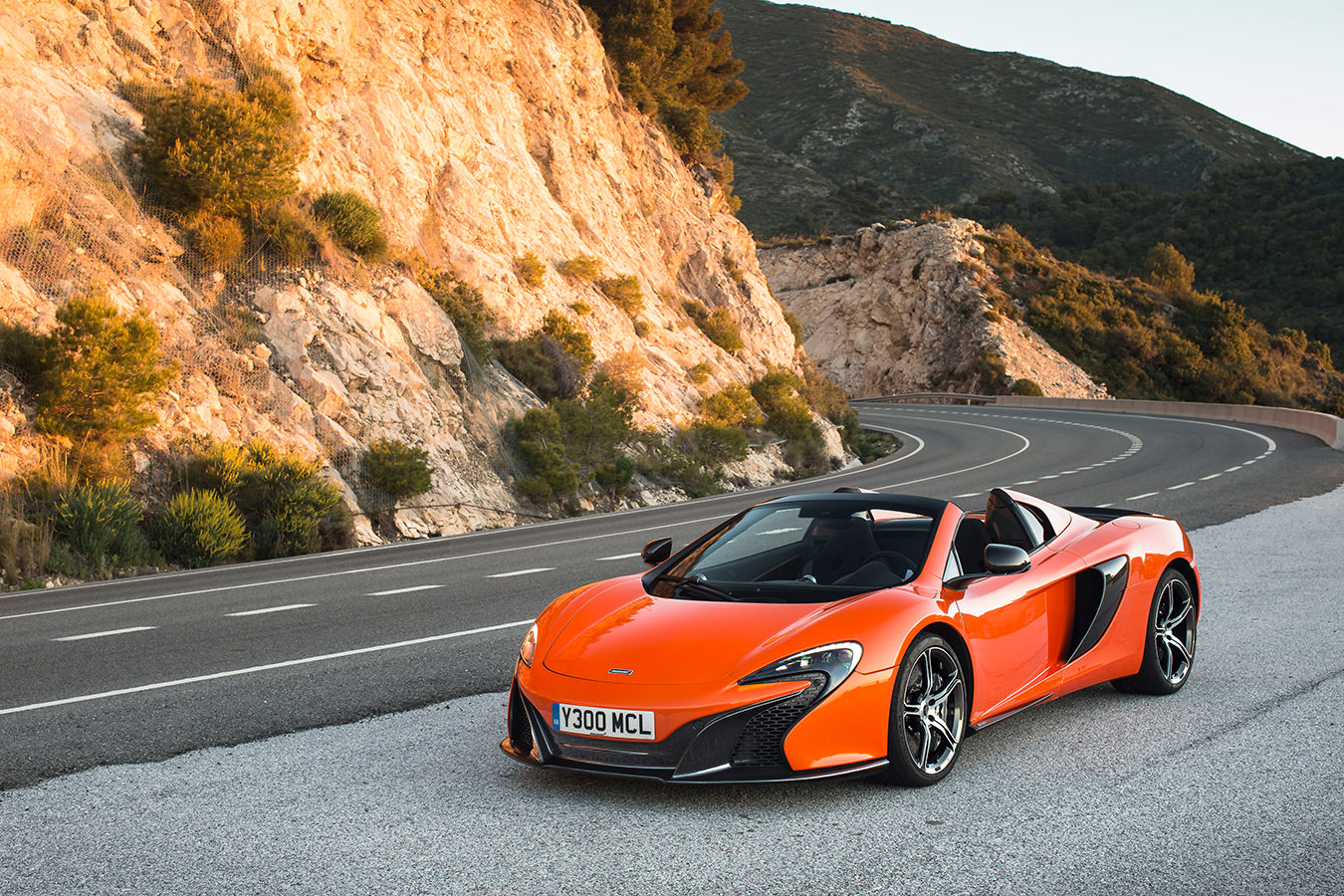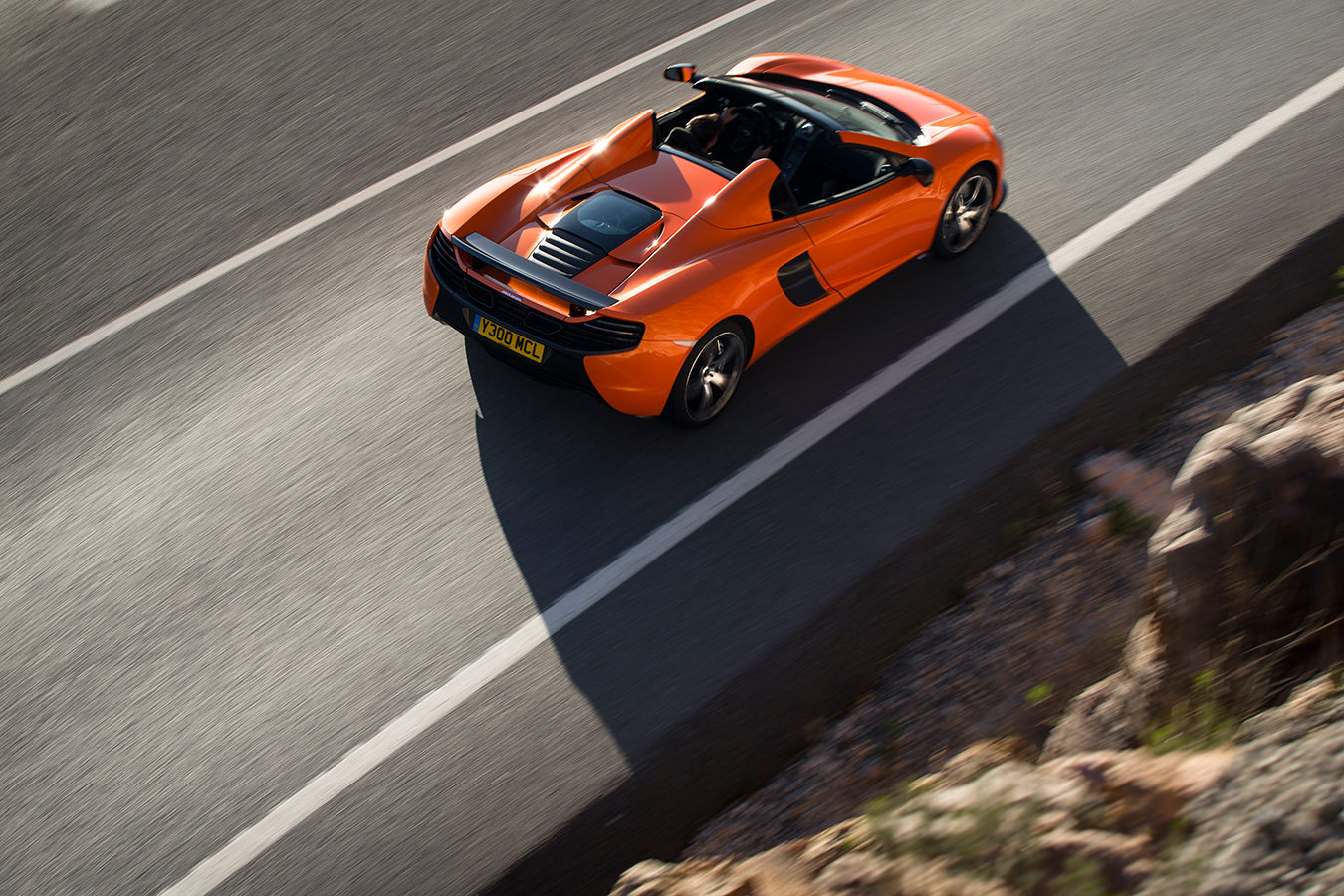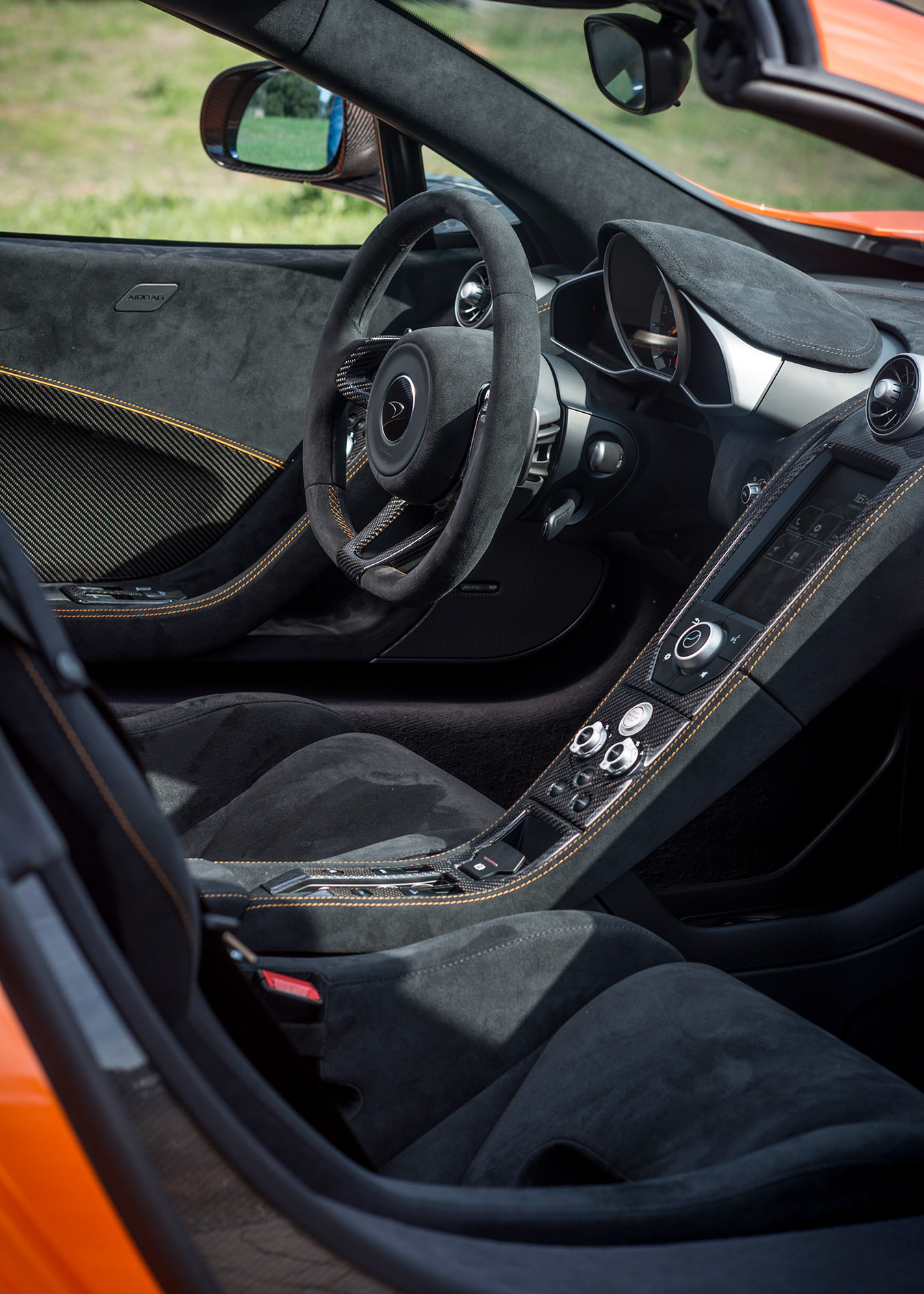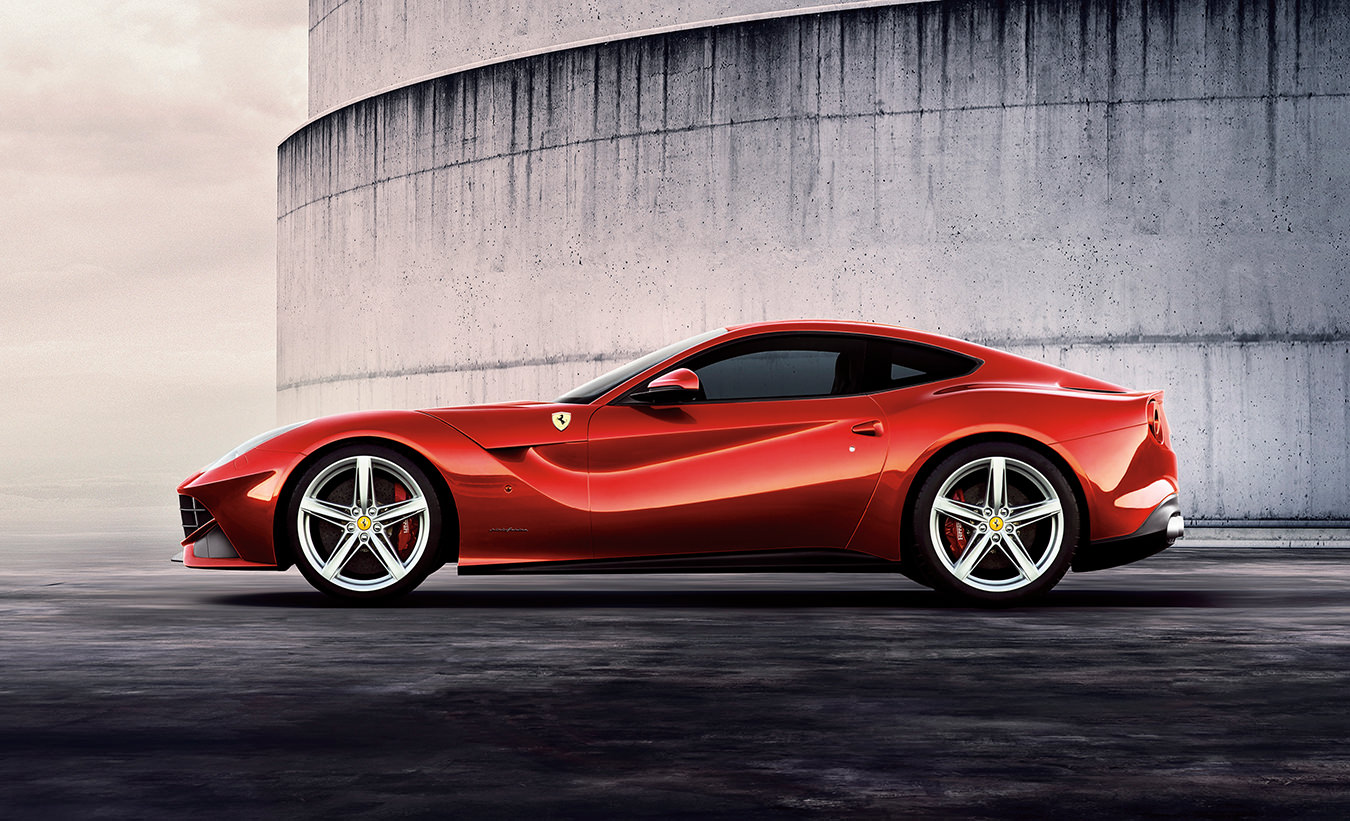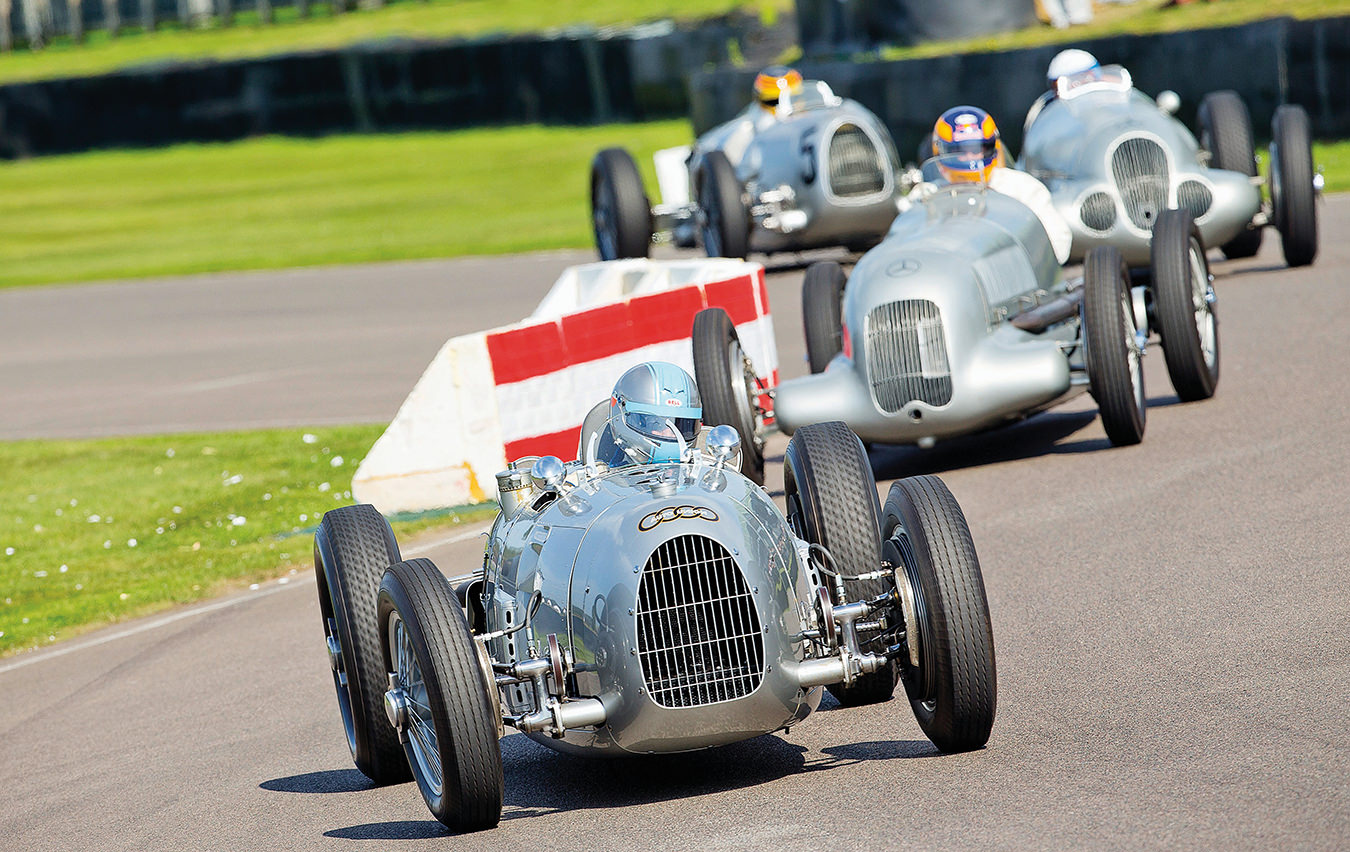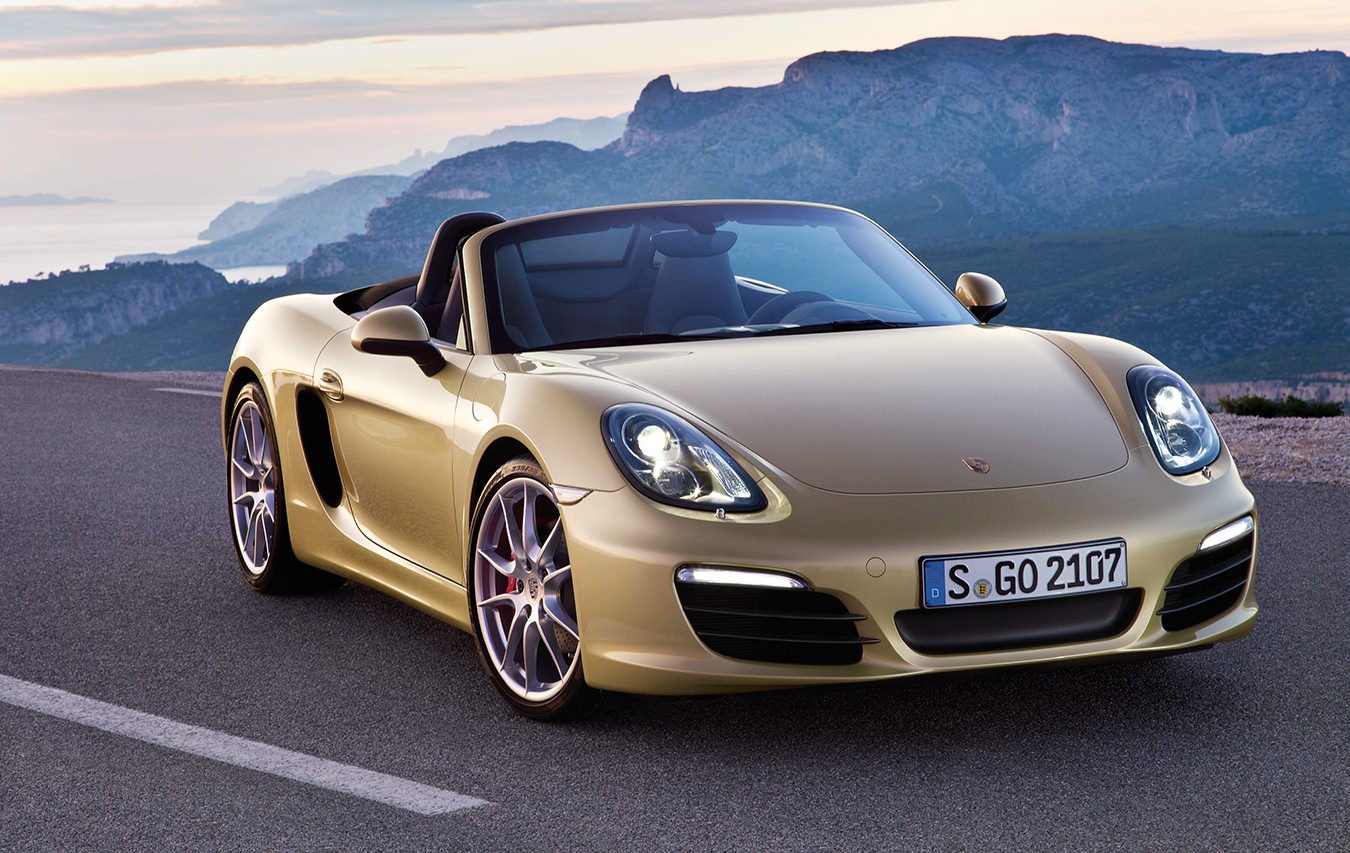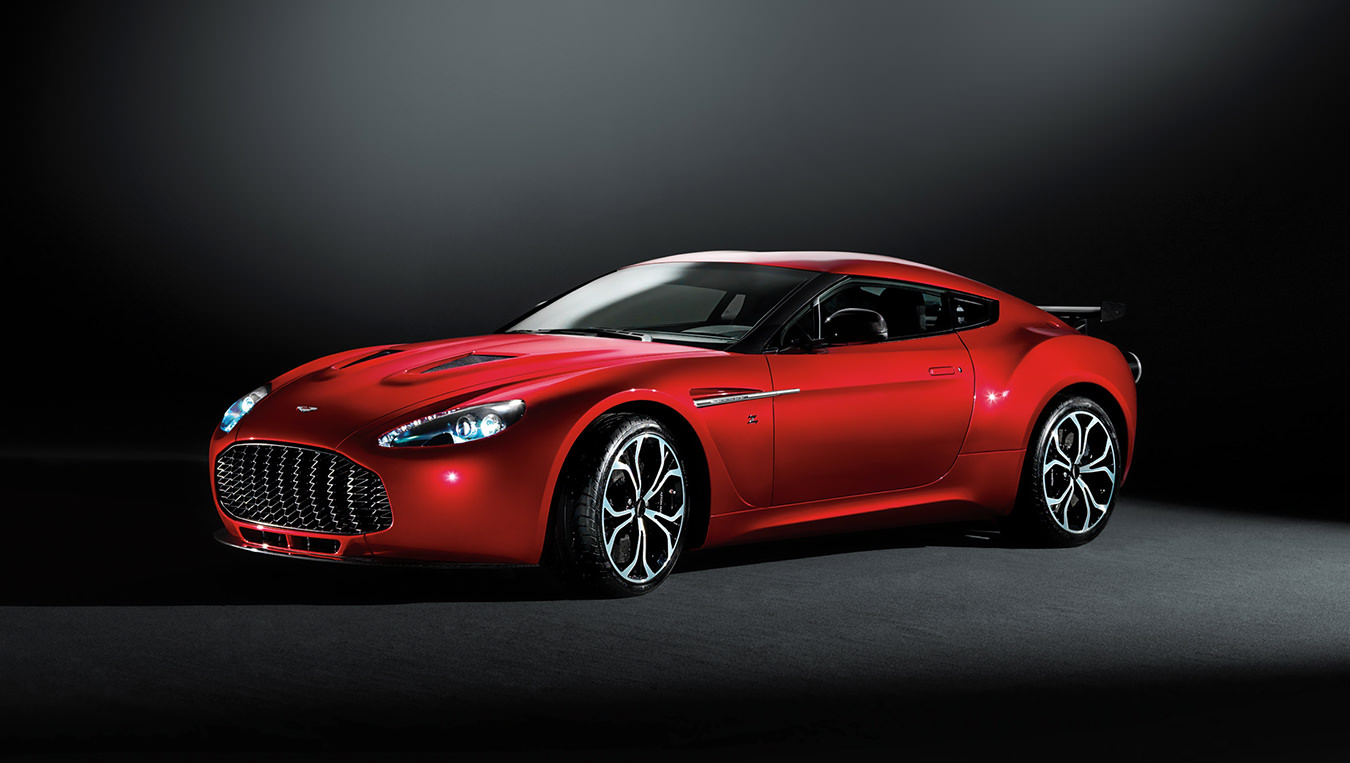A Grand Entrance
The McLaren 650S Spider.
Any $300,000-plus car has to generate passion: an emotional yearning in its affluent devotees that leads seemingly rational, business-minded owners to spend a generous helping more than a quarter of a million dollars on one automobile. In the McLaren 650S Spider, the British company has created just such a beast.
McLaren re-entered the supercar business in 2011 with the MP4-12C coupe, an awkward name that played both on the company’s long-time Formula One expertise and on a glorious one-hit automotive wonder—McLaren’s F1 supercar of the early 1990s. A sexy convertible MP4-12C Spider came out the following year, with a quick-folding metal roof just like its main competitor and road-going nemesis, the Ferrari 458 Spider. The 650S Coupe originally debuted in March 2014 at the Geneva Motor Show as a more refined version of the 12C, which had dropped the MP4-prefix by then. However, those plans quickly changed, and by this spring, the more powerful engine and P1-hypercar-inspired front end of the 650S became the entry-level McLaren.
The styling changes aren’t radical, but by adopting some of the nose’s cues of the advanced 903-horsepower P1 supercar, the 650S may in some eyes become a P1 with a $1,000,000 (U.S.) discount. Sure, this Spider’s $305,000 base price can easily float to north of 400 large with a generous helping of options, but it’s still much less than the reported $1.6-million average price of the P1, and right in line with the droptop Ferrari 458.
Plus, the P1 has now officially sold out, so if you’re in the market for a sparkling McLaren performance-car thrill ride that you can drive on the street, the 650S is it, for the time being at least.
Like the 458 or Lamborghini’s Huracán, the 650S Spider is a master at yanking eyeballs and straining necks, as folks whip around their heads to watch it pass, ask about it at red lights, and come up to you at the gas station with wonder. But, with doors that fold up and out, the 650S provides an even more dramatic entrance and exit than those two automotive A-listers. McLaren calls these dihedral doors, which, while they no doubt look cool, make careful parking necessary, whether at a mall or in a tight garage.
Maybe it’s McLaren’s way of ensuring the 650S only ends up in the roomiest valet parking spots, near the front.
The carbon-fibre chassis weighs only 75 kilograms, thanks to an F1-derived process that forms what McLaren calls a MonoCell. It presents a chunky sill after opening the door, so the best way to enter gracefully is to put your butt in the seat, then fold over your legs to tuck them under the wheel. Once seated, those up-and-out folding doors require long arms or a serious stretch. On the inside armrests of those dramatic doors, you’ll notice unique individual climate-control knobs, helping provide a distinctive view and user experience once the doors close. The infotainment screen between the front seats is vertical and thin, reinforcing the aura of lightweight and advanced design.
Hit the centre-mounted ignition button, just below the unique vertical screen, and the 650S barks to life, sounding much meaner than its 3.8-litre displacement would suggest. The twin turbo engine has been upgraded to 641 horsepower, up about 20 ponies from 12C duty, while there are normal, sport, and track dials available just under that start/stop button that adjust the seven-speed dual clutch gearbox as well as the suspension firmness.
Speaking of that gearbox, there’s no manual transmission option, similar to any new Ferrari. McLaren calls their seven-speed shift-paddle system an SSG (Seamless Shift Gearbox), and it defaults to the fully automatic mode, which is surprisingly smooth in city traffic and at low speeds in situations that trip up some dual-clutch automatics (such as when you want to inch forward carefully up an inclined driveway without rolling back or hastily jumping forward into something). There’s no transmission shifter, just the paddles behind the steering wheel, and buttons between the seats for reverse, neutral, and drive. There’s a button just above those that activates the adjustable transmission and suspension settings, or engages the model’s launch control system for when you want to make the quickest getaway possible.
The 650S Spider is a master at yanking eyeballs and straining necks, as folks whip around their heads to watch it pass.
As a mid-engine thoroughbred sports car, it’s huge fun to attack off-ramps and back roads on this car, though the 650S rarely feels like it’s working hard at any stay-out-of-jail speeds. Luckily, I had the chance to give both the engine and this suspension a serious workout with hard charging laps around Canadian Tire Motorsport Park’s newly expanded driver development track, courtesy of McLaren Toronto, a division of Pfaff Automotive Partners, which organizes track days for its McLaren and Porsche customers. (The company recently opened another McLaren dealership in Vancouver, in May 2014.) The new track doesn’t have nearly as long of a straight as the big track, but it’s doubtful that this car’s 329 km/h could be maxed out on either one, even with its impressive 0 to 300 km/h time of 26.5 seconds.
Coming out of the pits, with the 650S in the recommended sport mode, I take the first recognizance lap at about 60 per cent, learning the new lines around the track while amusing myself with the active spoiler going up and down in my rear-view mirror.
Punch the throttle from low speeds, and the 650S jumps forward like a stepped-on cat, racing up to red line so quickly that in sport and track modes you have to keep your eyes on the tach to time your upshifts properly and prevent the transmission from bouncing off the red line. There are occasional pops when downshifting rapidly for a corner, or on full-zoot upshifts, which McLaren terms an “exhaust flare”. It’s all a sensory roller coaster of G-forces, revs, and adrenalin-pumping speed—then repeat. Still, its throttle notes don’t sing quite as passionately as the high-pitched alto of the 458’s V8, though McLaren’s unique Brake Steer system that automatically vectors more power to the outside rear wheel when entering and leaving corners produces a magically adept track tool.
It’s perhaps because the 650S was developed as a track beast, and a one-up performance model to the 12C, that it feels so hard-edged on the street. After a few days of on-street driving for more real-world impressions, it became clear that the suspension is firmer in all settings now than in its former 12C iteration, and even without the anti-roll bars that harden the ride in some other exotics, the ride quality is similarly harsh to that of the 458 and Lambo Huracán, though just a touch softer than 991 Porsche GT3 levels.
Perhaps the truest rival in Ferrari’s stable to the 650S is the 458 Speciale A, the recently shown droptop version of the track-focused Speciale, although that Ferrari is a limited-edition model that will likely make the 650S look like a bargain in comparison.
As with any vehicle, there are some nits to pick. Though superpowerful carbon-ceramic brakes come standard and are welcome on the track, they did make some noise on the street when starting out. Also, it would be nice if the $5,370 body-lifting option came standard, as my tester didn’t have it, and there were a few driveways and bumps that I couldn’t crawl over in a car this low.
Starting at a relatively modest $18,500 more than the 650S Coupe, the 650S Spider weighs only 40 kilograms more than its fixed-roof counterpart. This allows it to keep the same 3.0-second flat 0 to 100 km/h time, which is the exact same time listed by Ferrari for its 458 Speciale A convertible. But unlike the Speciale, the 650S Coupe and Spider are the “volume” models now for McLaren, which it will build upon in future to expand its lineup.
With little to no performance deficit to the 650S Coupe, even the hardcore track enthusiasts will admit that the 650S Spider is a spectacular performance machine. Depending on the rules at your local track or driving club, the convertible may even work better on the circuit if your track permits top-down driving, since there’s no limit on headroom for one’s helmet with the top stowed. And even if the roof stays up on the track, the Spider’s rear window can power down independently, offering a hint of open-air freedom even when weather threatens.
The result is exhilaration at high speeds combined with soul-enriching sunshine at any speed, plus the on-track pedigree and technology to challenge Ferrari as seriously as McLaren has for the past 40 years in Formula One. Not perfect, but perfectly passionate indeed.

